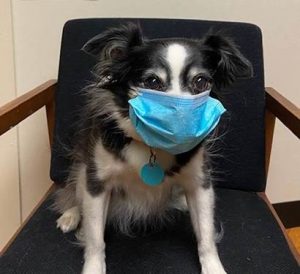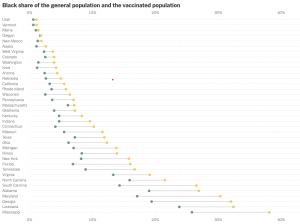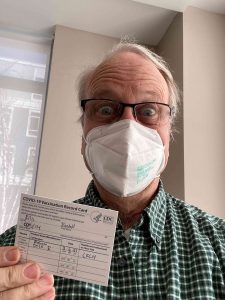One JAMA Network article this week and an accompanying editorial about COVID-19 are the first I have seen to carefully present the research about recent SARS-CoV-2 strains/variants, different types of vaccines, effects of one versus two doses, advice for people who were previously infected by SARS-CoV-2, what we know so far about their effectiveness against different strains, and what seems likely in the future. I put links in at the bottom after my summary.
The editorial by Drs. Mascola, Graham, and Fauci provides an accessible overview to brush up on your high-school level biology. It starts with a discussion of the distinction between lineage, variants, and strains: new genetic virus variants are organized into lineages when one variant builds upon another, and when the variants become sufficiently different in behavior from the original SARS-2 virus strain - such as by being more resistant to antibodies, or to vaccines, or more infective or fatal - then they are called a strain. There are dozens of new variants of SARS-2 virus, suggesting it is mutating rapidly. The UK, South Africa (SA) and Brazil strains are getting a lot of media attention, as they should. There is also a new variant found in southern California which they are trying to figure out its lineage, but it now represents 44 percent of the cases sequenced. Merely by its rapid appearance as the dominant strain in CA, we know it is a virulent strain.
The article by John Moore (PhD) of Dartmouth was the most relevant to me.
Here are a few quotes from Moore with interpretation in italics.
“Two categories of variants have different implications for vaccine efficacy. …The first category involves variants “…[that]… “spread more rapidly in a population.”
“The second category involves variants that are more concerning, represented by the B.1.351 and P.1 lineages that emerged in South Africa and Brazil, respectively….[that help the viruses resist antibodies created by vaccines or previous infections].
“The combination of a high virus replication rate within an individual (a high viral load) and a suboptimal level of neutralizing antibodies is the exact environment in which resistant viruses are considered likely to emerge and spread.3,4”
In other words, people who have had only one dose of a vaccine are more likely to promote new variants since they do not have enough neutralizing antibodies. This motivates the emphasis in the US for two vaccine doses, close together.
“At present, most scientists active in this area are reasonably optimistic that the efficacy of the mRNA vaccines [Moderna and Pfizer] will not be substantially compromised by the B.1.351 and P.1 [SA and Brazil] variants, …”
This is great news if true, but there is little clinical evidence so far..
In order to reduce the creation of new variants, Moore recommends Pfizer, Moderna, and (when approved) Novavax 2 dose vaccines if available, since they give strong antibody protection.
“The Johnson & Johnson 1-dose adenovirus vector vaccine … is less effective than the Moderna, Pfizer, and Novavax 2-dose designs.”
Moore recommends use of Johnson and Johnson one-dose on younger people (aged <40 years) who tend to have naturally lower “viral replication rates” and hence will not give the SARS-COV-2 as much chance to mutate then they get infected.
“All leading vaccine companies are now redesigning their S-protein components to counter new variants, particularly B.1.351 [SA].”
“Another issue with significant implications involves what happens when a mRNA vaccine [Pfizer or Moderna] is given to a person who has recovered from COVID-19. Small-scale studies have shown that a single mRNA vaccine dose rapidly boosts neutralizing antibody titers to very high levels, perhaps rendering the second dose redundant in this special circumstance.10 … A related issue is that the mRNA vaccines appear to trigger strong (although short-lived) adverse effects (such as headaches and mild fever) in people who have previously been infected with COVID-19.”
In light of this, I am planning to get the Pfizer and Moderna rather than J&J, and await further research for the second dose.
Novovax is a huge potential entrant into this vaccine race with its recombinant protein nanoparticle COVID-19 vaccine. It is not yet approved for use in the US, but is hoping for May. It is gearing up for production at the rate of 2 billion doses per year to be produced in India and Japan. Early clinical results from tests I SA and Brazil are encouraging.
I foresee a long future for vaccines in the world.
JAMA Viewpoint
March 4, 2021
John P. Moore, PhD
Abstract Full Text
free access is active quiz has multimedia online first
JAMA. 2021; doi: 10.1001/jama.2021.3465
This Viewpoint proposes ways to maximize vaccine efficacy and allocation given the rise of coronavirus variants and authorization of a Johnson & Johnson vaccine, including reserving the latter for younger healthier populations, boosting it with a single-dose messenger RNA (mRNA) vaccination, and single mRNA immunization of people with prior documented SARS-CoV-2 infection.
Editorial
February 11, 2021
SARS-CoV-2 Viral Variants—Tackling a Moving Target
John R. Mascola, MD1; Barney S. Graham, MD, PhD1; Anthony S. Fauci, MD2
Author Affiliations Article Information
JAMA. Published online February 11, 2021. doi:10.1001/jama.2021.2088
Novavax press release Jan 28, 2021 at 4:05 PM EST
Company web site.
Novavax COVID-19 Vaccine Demonstrates 89.3% Efficacy in UK Phase 3 Trial



